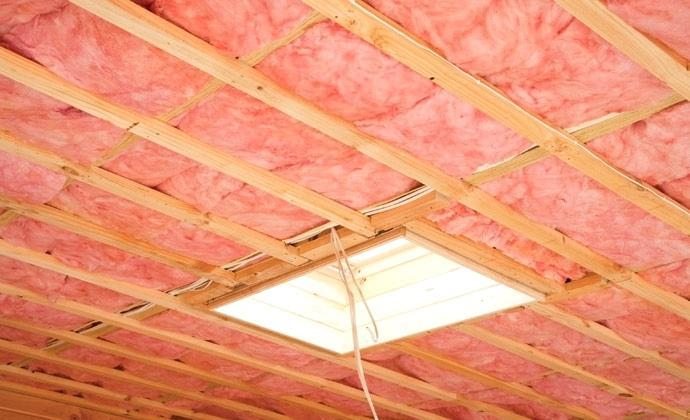When it comes to energy efficiency in your home, one of the most effective ways to reduce energy costs and improve comfort is by properly insulating your attic. Fiberglass insulation is a popular choice for attic insulation due to its affordability, ease of installation, and effectiveness at reducing heat transfer. You can browse this website if you are looking for a fiberglass attic insulation.
In this comprehensive guide, we will explore how you can maximize energy efficiency with fiberglass attic insulation.
1. Understanding the Benefits of Fiberglass Attic Insulation
Why Choose Fiberglass Attic Insulation?
- Effective in reducing heat transfer: Fiberglass insulation is known for its ability to prevent heat from escaping in the winter and entering in the summer, keeping your home at a comfortable temperature year-round.
- Affordable: Fiberglass insulation is one of the most cost-effective insulation materials available, making it a popular choice for homeowners looking to improve energy efficiency on a budget.
- Durable and long-lasting: Fiberglass insulation is resistant to moisture, mold, and pests, making it a durable option that can last for many years without losing its effectiveness.
2. Determining the Right Amount of Insulation
Calculating the R-Value
The R-value of insulation measures its thermal resistance, indicating how well it can resist heat transfer. The higher the R-value, the better the insulation's performance. To determine the right amount of fiberglass attic insulation for your home, consider the following:
- Climate zone: Different climate zones require different R-values for optimal energy efficiency. Consult with local building codes or energy efficiency guidelines to determine the recommended R-value for your area.
- Current insulation: Check the existing insulation in your attic to see if it meets the recommended R-value for your region. If not, you may need to add more insulation to achieve maximum energy efficiency.
- Attic space: Measure the square footage of your attic to calculate how much insulation you will need. Consider the depth of insulation required to achieve the desired R-value.
3. Installing Fiberglass Attic Insulation
DIY vs. Professional Installation
While fiberglass attic insulation can be installed as a DIY project, hiring a professional insulation contractor may ensure the job is done correctly and efficiently. Consider the following factors when deciding whether to install the insulation yourself or hire a professional:
- Experience: Do you have experience working with insulation materials and tools? If not, it may be best to hire a professional to avoid errors that could compromise the insulation's effectiveness.
- Safety: Working in the attic can pose safety risks, such as falling through the ceiling or coming into contact with electrical wiring. Professionals are trained to work in these environments safely.
- Time and convenience: Installing insulation can be a time-consuming and physically demanding task. Hiring a professional can save you time and effort, allowing you to focus on other priorities.
4. Maintaining Fiberglass Attic Insulation
Ensuring Long-Term Performance
To maximize energy efficiency with fiberglass attic insulation, it is important to properly maintain the insulation over time. Follow these tips to ensure long-term performance:
- Inspect the insulation regularly for signs of damage, compression, or moisture. Repair or replace any damaged insulation to maintain its effectiveness.
- Seal air leaks in the attic to prevent heat transfer and improve overall insulation performance. Use caulk or weatherstripping to seal gaps around windows, doors, and other penetrations.
- Monitor indoor humidity levels to prevent moisture buildup in the attic, which can reduce the insulation's R-value and promote mold growth. Use a dehumidifier if necessary to maintain a healthy indoor environment.
5. Additional Energy-Saving Tips
Complementing Insulation with Other Energy-Efficient Measures
In addition to installing fiberglass attic insulation, there are other energy-saving measures you can implement to further improve the efficiency of your home:
- Seal ductwork: Leaky ducts can waste energy and reduce HVAC system efficiency. Seal duct seams with foil tape or mastic to prevent air leaks.
- Upgrade windows and doors: Energy-efficient windows and doors can reduce heat transfer and improve insulation performance. Consider installing double-pane windows or adding weatherstripping to doors for better energy efficiency.
- Use programmable thermostats: Programmable thermostats allow you to set heating and cooling schedules based on your daily routine, reducing energy consumption when you are away from home or asleep.
Conclusion
Maximizing energy efficiency with fiberglass attic insulation is a cost-effective and sustainable way to reduce energy costs, improve comfort, and lower your environmental impact. By understanding the benefits of fiberglass insulation, determining the right amount of insulation, installing it correctly, and maintaining it over time, you can create a more energy-efficient home that is both comfortable and sustainable.

